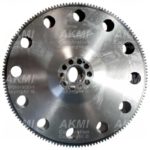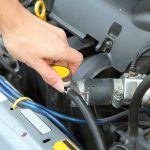
The heavy duty aftermarket has seen many changes over the last 30 plus years. These changes have affected not only the sales of heavy duty truck parts, but the overall quality of the parts as well.
Commercial Trucks–1982:
- There were an estimated 3.6 million commercial trucks on the road.
- Two-Thirds of them were medium duty classification.
- Of the heavy duty trucks on the road, 50% of them were Class 6.
- Class 8 trucks only ran an average of 50,000 miles per year.
Commercial Trucks–2012:
- There is an estimated 4.4 million commercial trucks on the road.
- Class 8 trucks make up 65% of this number.
- Class 8 trucks run an average of 76,500 miles per year.
One would think, with significantly more heavy duty trucks on the road, replacement parts would be in high demand. As technology has improved, the quality of parts has improved.
Expected Parts Mileage:
- In 1982 an alternator would last an average of 132,000 miles, clutches an average of 171,000 miles and a Class 8 engine would be overhauled at around 276,000 miles.
- Today, an alternator would last an average of 278,000 miles, clutches an average of 369,000 miles and a Class 8 engines would be overhauled at 680,000 miles.
- Technology has increased the life of heavy duty truck parts, so they do not need to be replaced as often. Most truck owners today may never replace a clutch or overhaul an engine.
Federal emissions regulations have also impacted the Aftermarket industry. Over the last 5 years, new regulations are being enforced on trucks to have cleaner emissions. More often than not, it’s more prudent to buy a new truck that already meets these standards, then try to convert the older truck.
It has been noted that there is a “sweet spot” for the aftermarket when a Class 8 truck is 7-8 years old. This is when major components of the truck may need to be replaced, or an overhaul of the engine may need to be done. Any extended warranties would be ended by this time, and truckers/fleets would be looking at aftermarket sources to fill their heavy duty truck parts needs. Besides overhauling the engine and replacing parts, the only other options would be to purchase a new truck or glider kit-built truck.
Heavy Duty Aftermarket (Class 6-8)-1982:
- $9.3 billion dollar business
- The percentage of heavy duty truck parts being sold in the aftermarket – power generation-40%, power transmissions-23%, undercarriage business-18%, electrical-11% and other parts-8%
Heavy Duty Aftermarket (Class 6-8)-2013:
- $22 billion dollar business
- The percentages of heavy duty truck parts being sold in the aftermarket – power generation-34%, undercarriage-21%, power transmissions-14%, cab/chassis-13%, electrical-8% and other parts-10%.
The aftermarket industry is crucial to keeping transportation & shipping industries on the road today and for many years to come.





